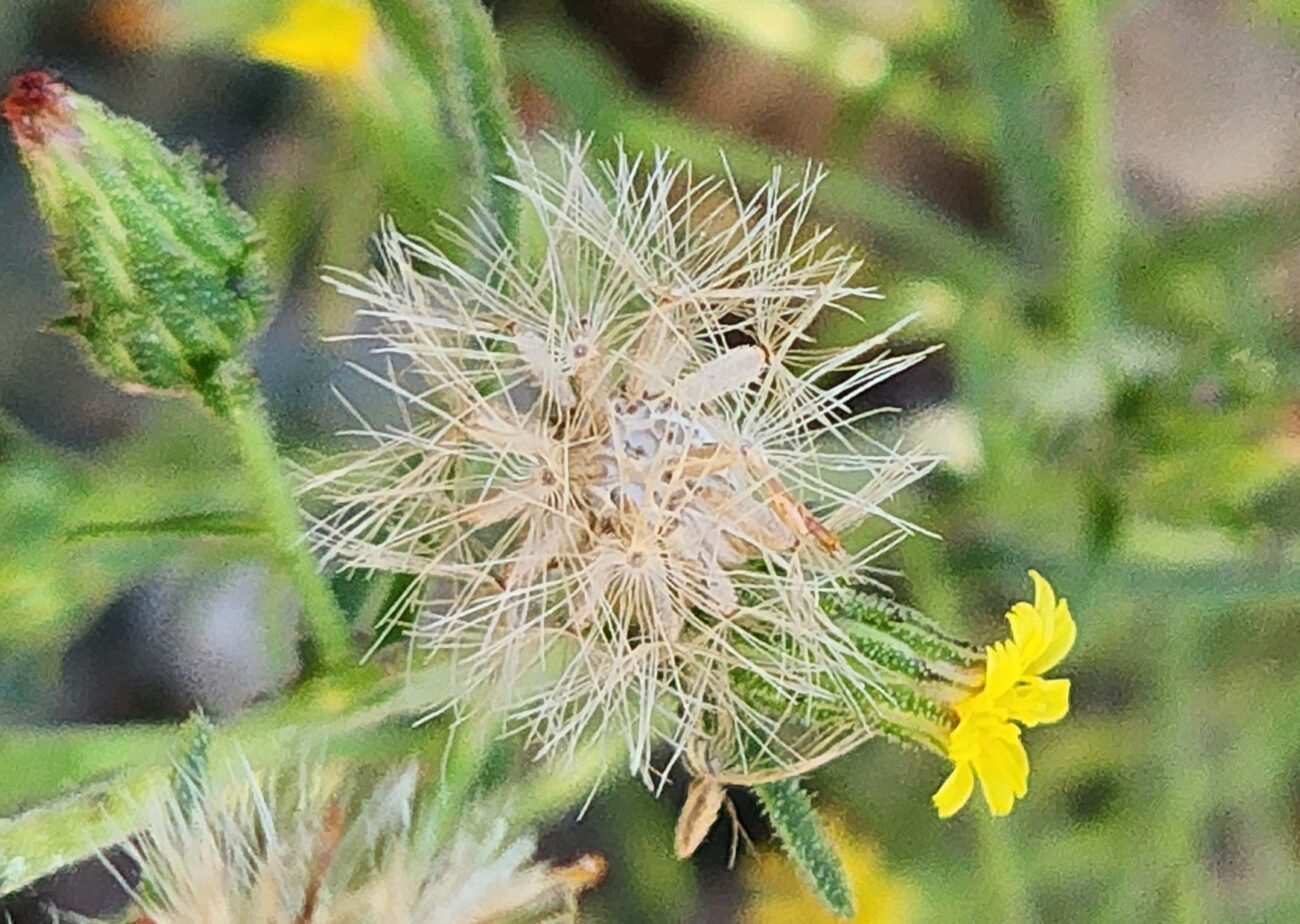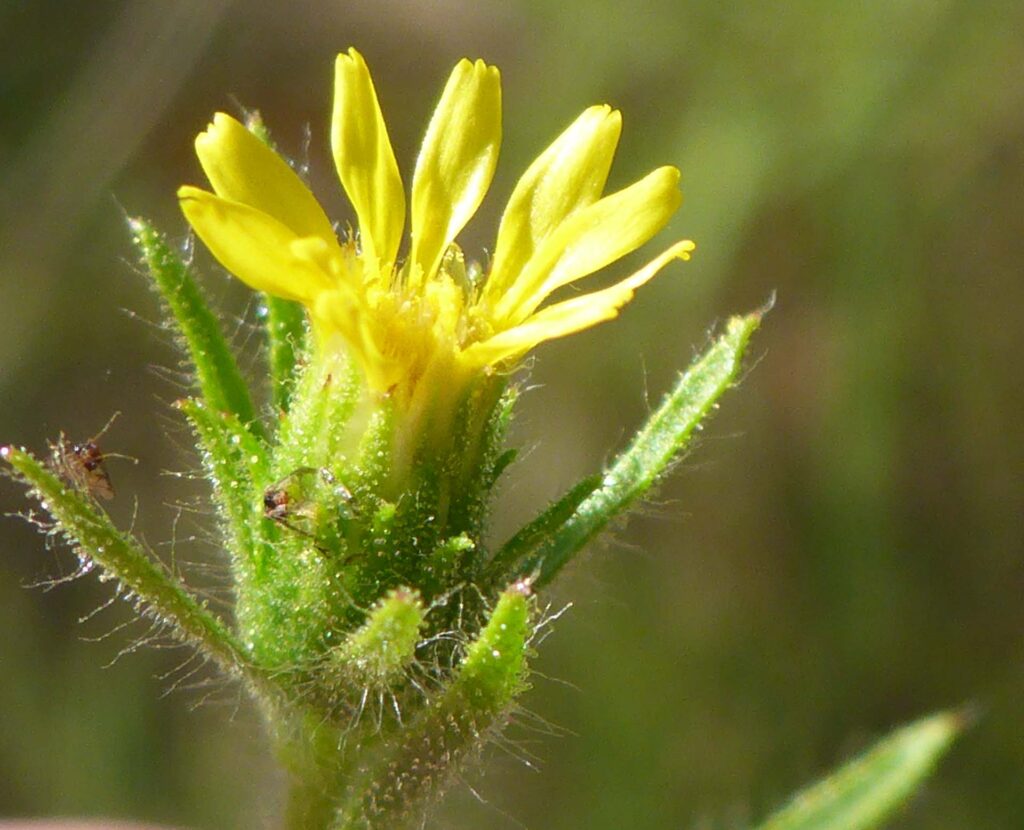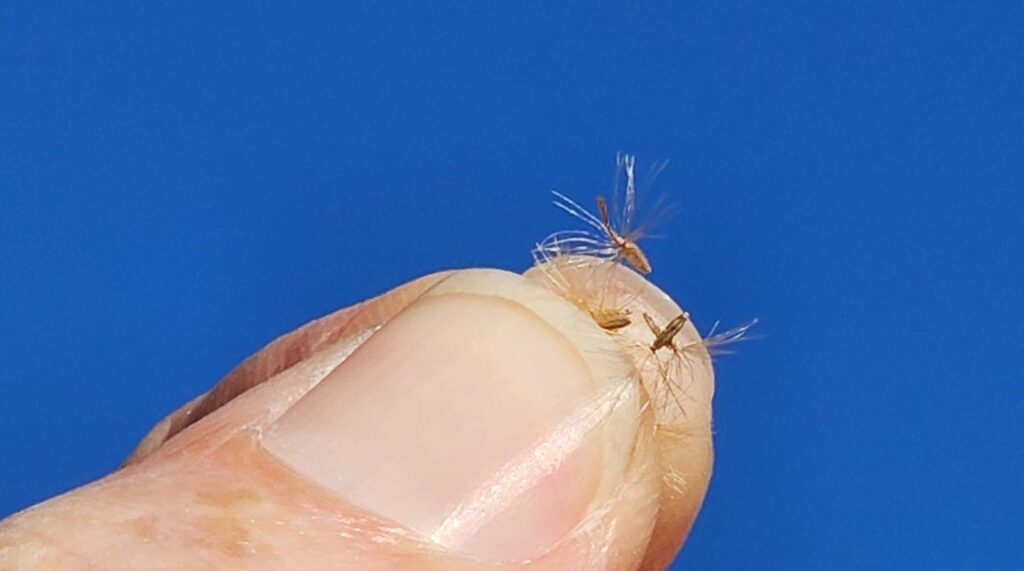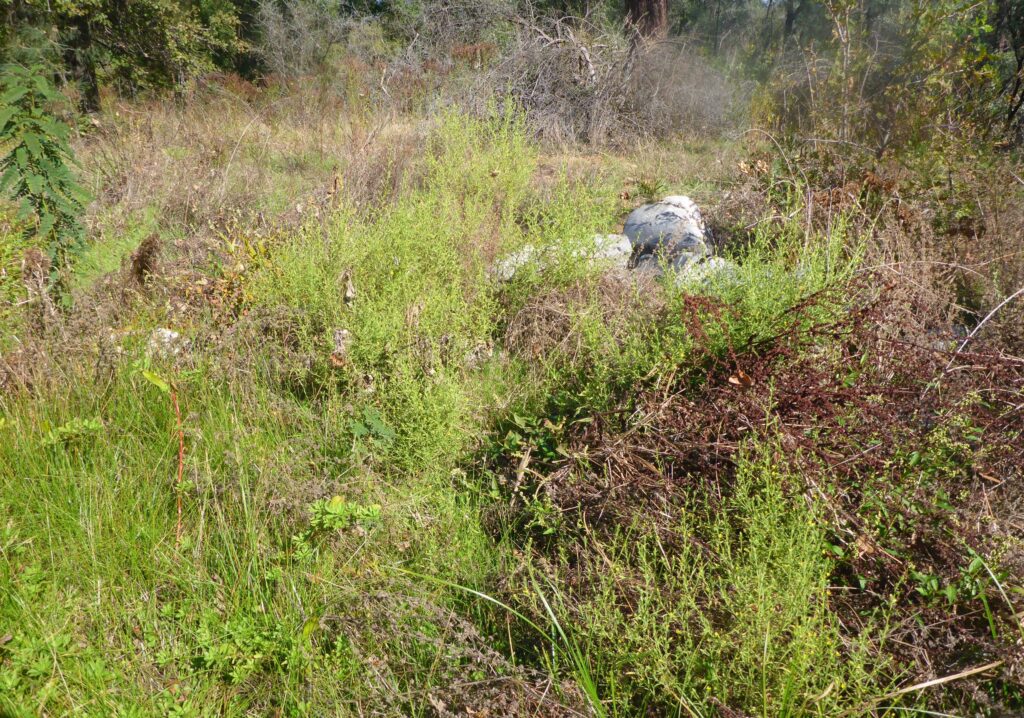
Stinkwort, Dittrichia graveolens, is a fairly new invasive plant in California that grows up to three feet tall. A member of the sunflower family, it produces very small heads of yellow flowers that bloom in the fall. When in seed, it forms a tufted head somewhat like a miniature dandelion. The stems and leaves are sticky and have a strong unpleasant smell; the resins can cause dermatitis but not as bad as poison oak. Stinkwort can be toxic to sheep and cattle, although most cattle won’t eat it unless they are starving.

The plant is originally from southern Europe and northern Africa, and was first discovered in California in 1984. It has become a fast-growing invasive in California and could potentially spread like yellow star-thistle.

I found this weed on the Westside Trail in Redding and pulled up about 15 plants that had just started to bloom. A week later, I came by again and found that many of the plants that I pulled had gone to seed. Now I know why volunteer crews clearing sites put them in plastic bags! These plants may have been brought in by fire restoration crews or someone on the trail with seeds in their clothes.

On our upcoming joint Shasta Chapter CNPS–Shasta Environmental Alliance (SEA) New Year’s Day field trip on the Westside Trail, I will point them out. SEA and Shasta Chapter CNPS may do a joint stinkwort removal next fall if we have enough volunteers. ~David Ledger
